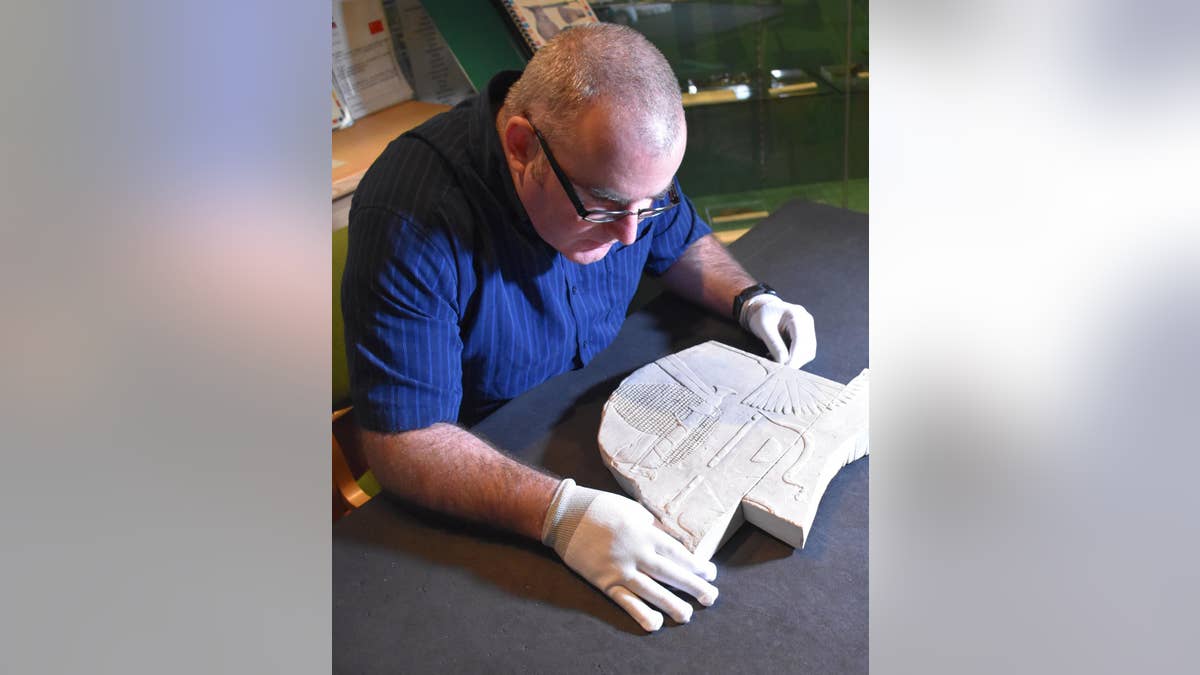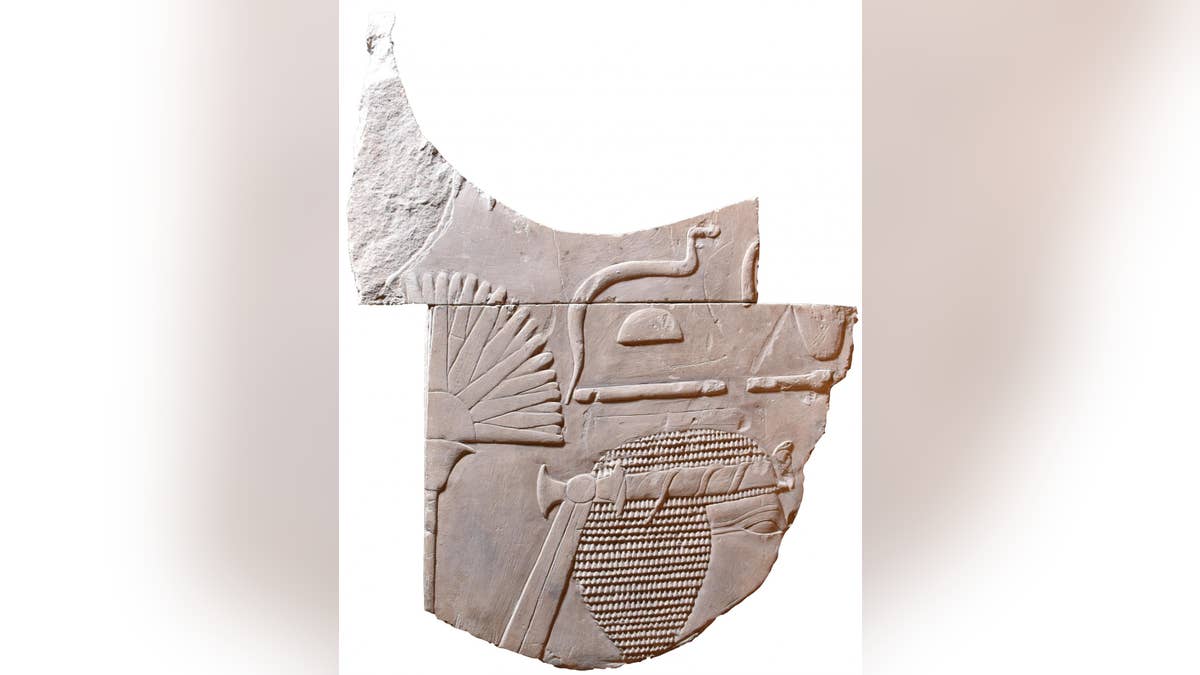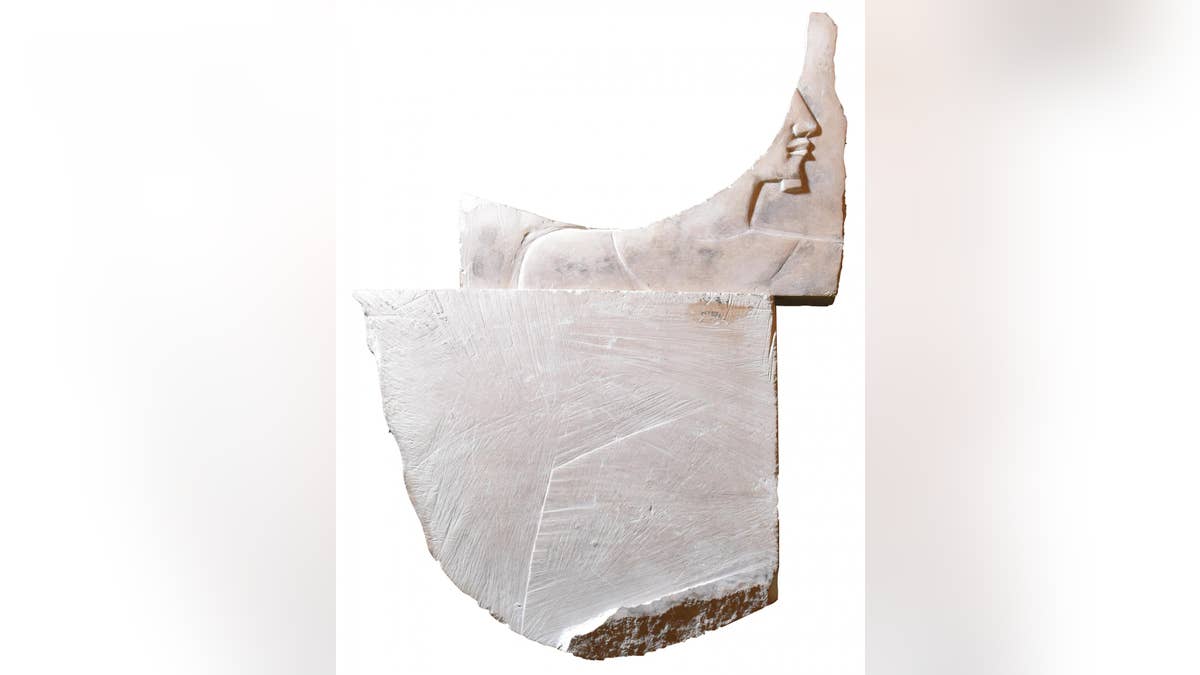Mysterious Egyptian pharaoh head discovered by accident
Swansea University Egyptology lecturer Dr. Ken Griffin has found a depiction of female pharaoh Hatshepsut on an object from the Egypt Centre during an artifact handling session with his students.
A rare ancient artifact depicting the famous female pharaoh Hatshepsut has surfaced in the U.K., stunning experts.
Consisting of two limestone fragments that have been glued together, the artifact had been in storage for 20 years before it was chosen for an object handling session by students of Swansea University in Wales. While the artwork was being analyzed by the students, Swansea University Egyptology lecturer Dr. Ken Griffin noticed something unusual.
Griffin recognized the artwork’s iconography as being similar to carvings within the temple of Hatshepsut at Deir el-Bahri in Luxor, Egypt. The front of the artifact depicts the head of a figure whose face is missing, with the remains of a fan. A uraeus, or cobra, is depicted on the figure’s forehead and hieroglyphics can also be seen above her head.
KING TUTANKHAMUN BOMBSHELL? MYSTERIOUS PHARAOH MAY HAVE BEEN A BOY SOLDIER
The decoration of the fan, the figure’s hair, the uraeus and her headband are all similar to images found at Deir el-Bahri. The hieroglyphs, which use a female pronoun, are also found in text at the temple.

Swansea University Egyptology lecturer Dr Ken Griffin and the newly discovered artifact. (The Egypt Centre, Swansea University)
The unusual artifact, which is held in Swansea University’s Egypt Centre, thrilled Griffin and his students.
"The identification of the object as depicting Hatshepsut caused great excitement amongst the students,” said Griffin, in a statement. “After all, it was only through conducting handling sessions for them that this discovery came to light."
IS THIS THE FACE OF TUTANKHAMUN?
Hatshepsut, who reigned from about 1478 B.C. to 1458 B.C., is one of only a handful of female pharaohs. “Early in her reign she was represented as a female wearing a long dress, but she gradually took on more masculine traits, including being depicted with a beard,” explained Swansea University, in its statement.

The front of the artifact (The Egypt Centre, Swansea University)
The University obtained the artwork in 1971 with other artifacts that once belonged to the pharmaceutical mogul Sir Henry Wellcome.
The head of a man with a short beard is depicted on the rear of the mysterious fragment. “Initially there was no explanation for this, but it is now clear that the upper fragment had been removed and recarved in more recent times in order to complete the face of the lower fragment,” explained Swansea University, in its statement. “The replacement of the fragment below the figure would also explain the unusual cut of the upper fragment.”
MYSTERY OF 'SCREAMING EGYPTIAN MUMMY' WHICH HAS BAFFLED ARCHAEOLOGISTS FOR YEARS FINALLY RESOLVED
The recent work on the fragment’s rear may have been done by an antiques dealer, auctioneer, or previous owner to increase the piece’s value or attractiveness, the University added.

The rear of the artifact (The Egypt Centre, Swansea University)
Experts think that the artifact came from Deir el-Bahri but more research is needed to confirm this.
Ancient Egypt continues to reveal its secrets. Stunning new research, for example, claims that King Tutankhamun may have been a boy soldier, challenging the theory he was a weak and sickly youth before his mysterious death at around 18 years of age.
DESERT DISCOVERY: LOST TEMPLE OF RAMSES II UNCOVERED BY ARCHAEOLOGISTS
Experts in the U.K., for example, recently found the world’s oldest figurative tattoos on two ancient Egyptian mummies, one of which is the oldest tattooed female ever discovered.
Other recent finds include an ancient cemetery in Egypt with more than 40 mummies and a necklace containing a “message from the afterlife.” An ancient statue of a Nubian king with an inscription written in Egyptian hieroglyphics was also found at a Nile River temple in Sudan.
Scientists also believe that they may have found the secret of the Great Pyramid’s near-perfect alignment. Experts are also confident that they have solved the long-standing mystery of the “screaming mummy.”
DESERT DISCOVERY: LOST TEMPLE OF RAMSES II UNCOVERED BY ARCHAEOLOGISTS
In February, archaeologists announced the discovery of a 4,400-year-old tomb near the pyramids. Late last year, archaeologists also revealed that they had uncovered the graves of four children at an ancient site in Egypt.
Follow James Rogers on Twitter @jamesjrogers









































